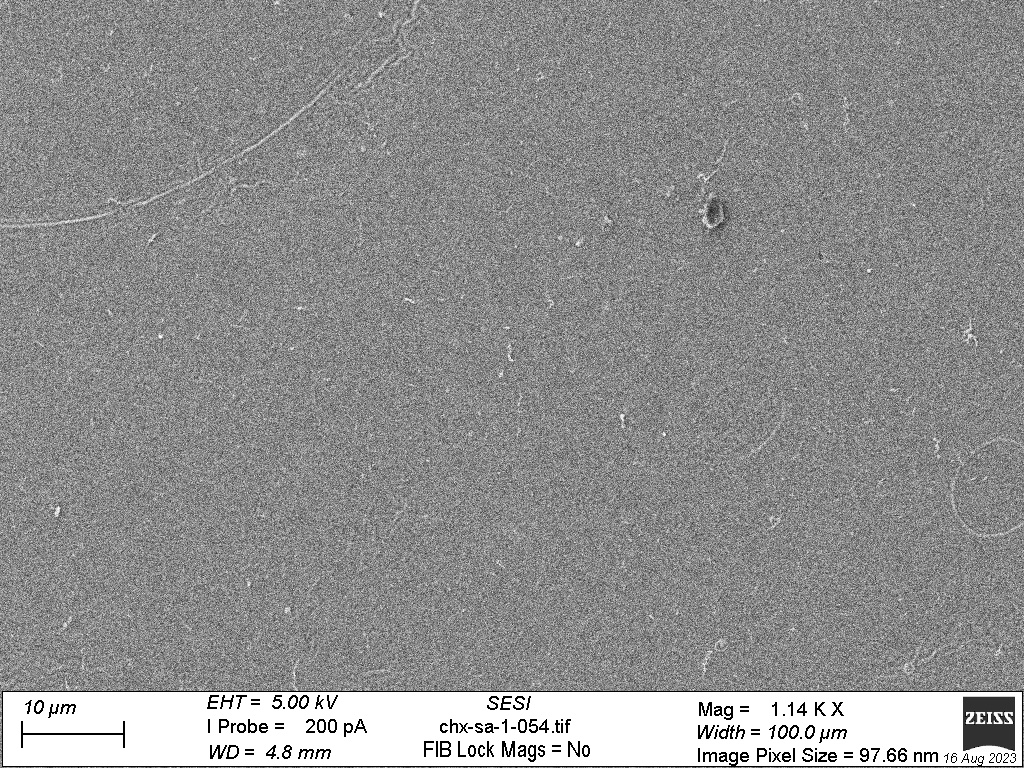A bacteria killing coating created by scientists has been used in trials of a new paint that can be applied to a range of surfaces to effectively kill bacteria and viruses, including difficult to kill species such as MRSA, flu and COVID-19.
Scientists at the University of Nottingham's School of Pharmacy have trialled a new paint-on resin product that incorporates bacteria killing chlorhexidine, which is often used by dentists to treat mouth infections and for pre-surgical cleaning.
The team have worked with Indestructible Paint to create a prototype antimicrobial paint using this new material and have found it effectively activates when dried to kill a range of pathogens. The findings of a new study have been published in Scientific Reports.
The new paint can be applied to a range of plastic and hard non-porous surfaces to provide an antimicrobial coating. As well as hospital settings the paint can be used on any non-porous surface and the team are also investigating its use in the transport and aerospace industry.
Surfaces can act as a reservoir of bacteria especially in medical settings, from hospital beds and toilet seats. As well as other frequently touched surfaces in public spaces such as aeroplanes across the aerospace industry in the manufacture of seats and tray tables. Some microbial species can survive despite enhanced cleaning regimes. In hospital this can lead to an increased risk of patients getting infections whilst in hospital which then need antibiotic treatment. These microorganisms can survive and remain infectious on abiotic surfaces, for extended periods, sometimes up to several months.
It's hugely exciting to see this research being applied in a practical way. In our initial research we incorporated the disinfectant into the polymer to create a new antimicrobial paint which has excellent efficacy, it also doesn't spread into the environment or leach from the surface when touched. This new study showed clearly that surfaces with this paint applied had no bacteria and as soon as it dries it is active. By adding this to paint we can create an effective bacteria killing coating that is easy to apply and cost effective.
The scientists have worked with Indestructible Paint, manufacturers of specialist, high-performance coatings for a wide range of industries including; aviation, rail and industrial.
We are always looking for new ways to innovate with our products and this new material creates an opportunity to make a product that could have a positive impact on preventing the growth and spread of bacteria and viruses in a wide range of environments. We work across many industries where this would be a huge benefit, for example coating aeroplane seats and tray tables, areas where bacteria are known to grow. It's still in the early stages but we look forward to further testing with the aim of rolling this out commercially.
Dr de Cogan continues: "Paint is widely used as it is a versatile, cheap and durable material, it can be applied to any surface. These plastic and metal surfaces found widely in public spaces do have drawbacks. Research has shown that contaminated surfaces, can act as a reservoir of antimicrobial resistance genes, encouraging the spread of antimicrobial resistance across bacterial species through horizontal gene transfer despite deep cleaning practices.
It is paramount that new technologies such as this antimicrobial paint are developed to prevent the spread of pathogenic microorganisms to vulnerable patients and address the ever-increasing threat of antimicrobial resistance








